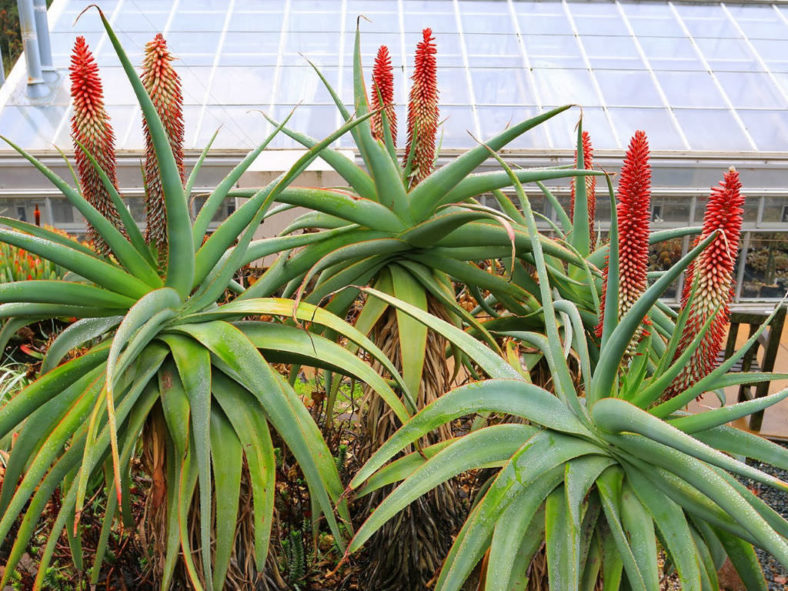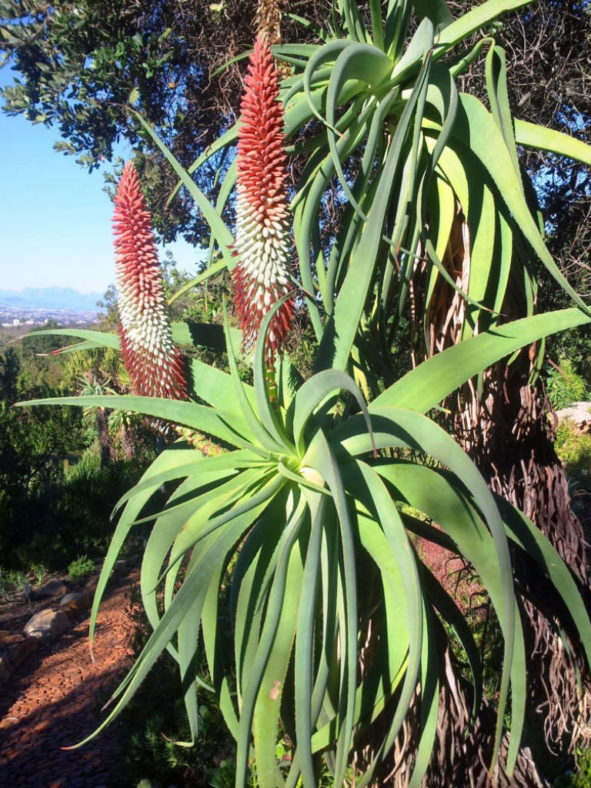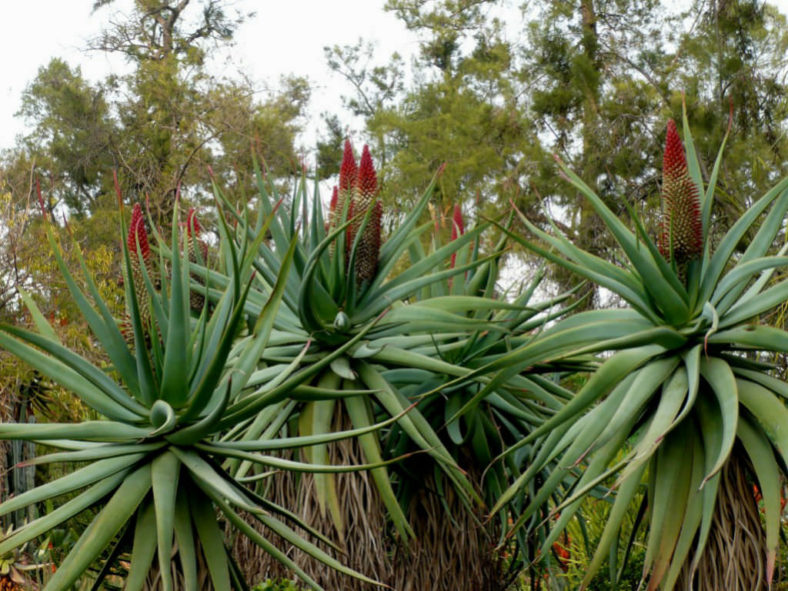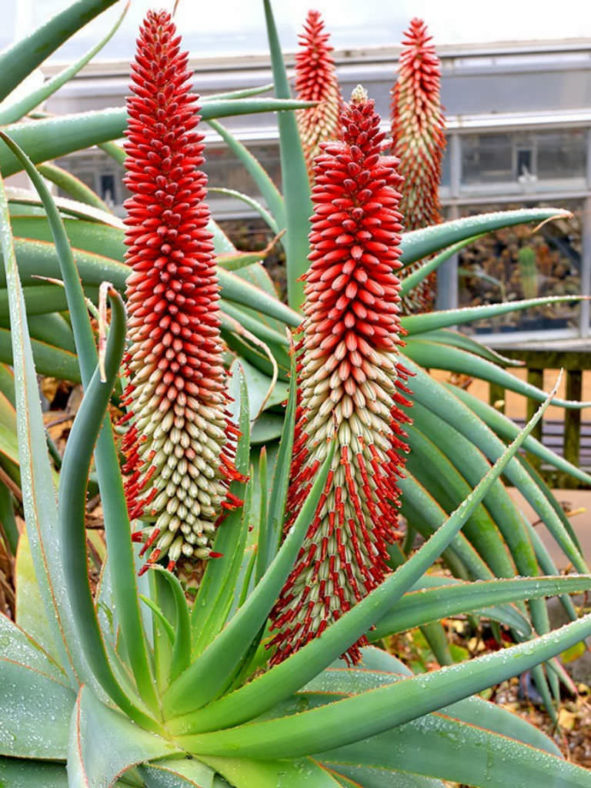Scientific Name
Aloe speciosa Baker
Common Name(s)
Beautiful Aloe, Tilt-head Aloe
Scientific Classification
Family: Asphodelaceae
Subfamily: Asphodeloideae
Genus: Aloe
Origin
Aloe speciosa is native to South Africa. It occurs on Steep slopes in succulent thickets from Montagu and Swellendam in the Western Cape to near the Kei River in the Eastern Cape province.
Description
Aloe speciosa is a succulent tree that forms dense rosettes at the end of a simple or branched stem covered below with persistent dry leaves. It can grow up to 13.1 feet (4 m) tall. The rosettes are usually tilted sideways. The leaves are glaucous green with a bluish to reddish tinge and have narrow, deep to pale pink margins with small, pale red teeth. They are thick, fleshy, erect to spreading, slightly channeled, and gradually narrowing to the apex, measuring up to 32 inches (80 cm) long and 3.6 inches (9 cm) wide.
The flowers are about 1.4 inches (3.5 cm) long, red in bud, and greenish-white at maturity. In early spring, they appear in erect, very densely flowered, broadly cylindric racemes on up to 8 inches (20 cm) tall peduncles. The racemes are up to 12 inches (30 cm) long and 4.8 inches (12 cm) in diameter.

Hardiness
USDA hardiness zones 9a to 11b: from 20 °F (−6.7 °C) to 50 °F (+10 °C).
How to Grow and Care
Aloes are very forgiving plants. However, as with all succulents, they must never be allowed to sit in stagnant water, and the plants should be carefully monitored to watch for signs of overwatering. These succulents prefer warmer temperatures of 70 to 80 ºF/ (21 to 27 ºC) but will survive to 40 ºF (4.5 ºC). A well-drained potting mix is essential. Use a cactus or succulent mix. Feed with a cactus fertilizer in the summer only. Suspend feeding in the winter as the plant goes dormant.
Aloes are not particularly fast-growing and will only rarely need repotting. Repot plants in the spring that are tipping over their pots or have ceased growing. Use a fast-draining potting mix with one-third sand or pebbles.
When repotting a larger plant, dividing the root ball carefully is possible. Some kinds of Aloe will send off off-sets that can be potted independently.
See more at How to Grow and Care for Aloe.
Hybrids
Links
- Back to genus Aloe
- Succupedia: Browse succulents by Scientific Name, Common Name, Genus, Family, USDA Hardiness Zone, Origin, or cacti by Genus
Photo Gallery
Click on a photo to see a larger version.



